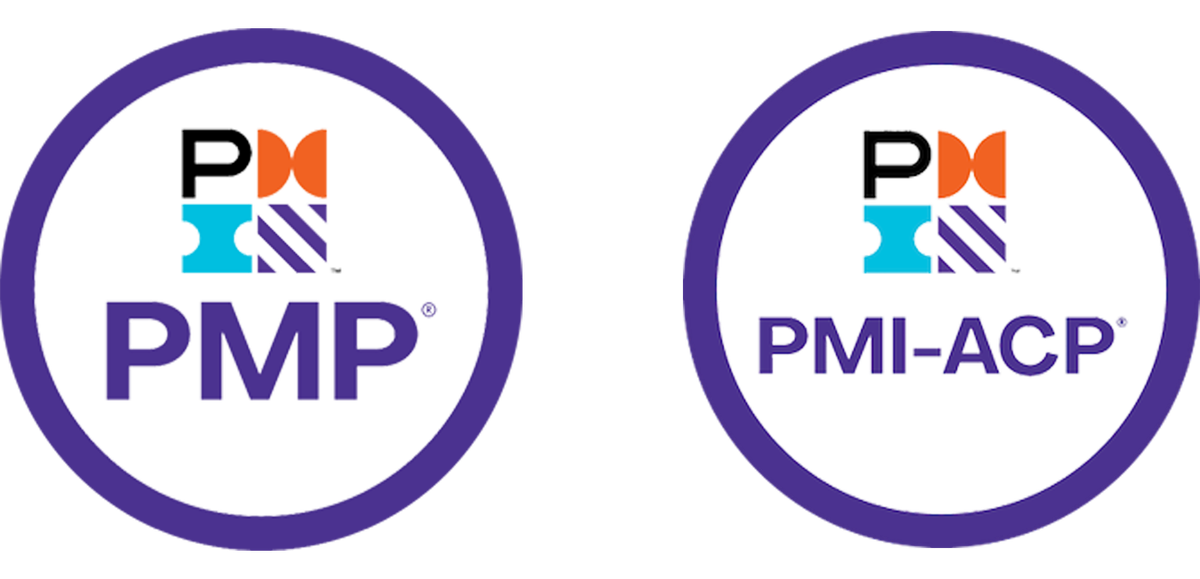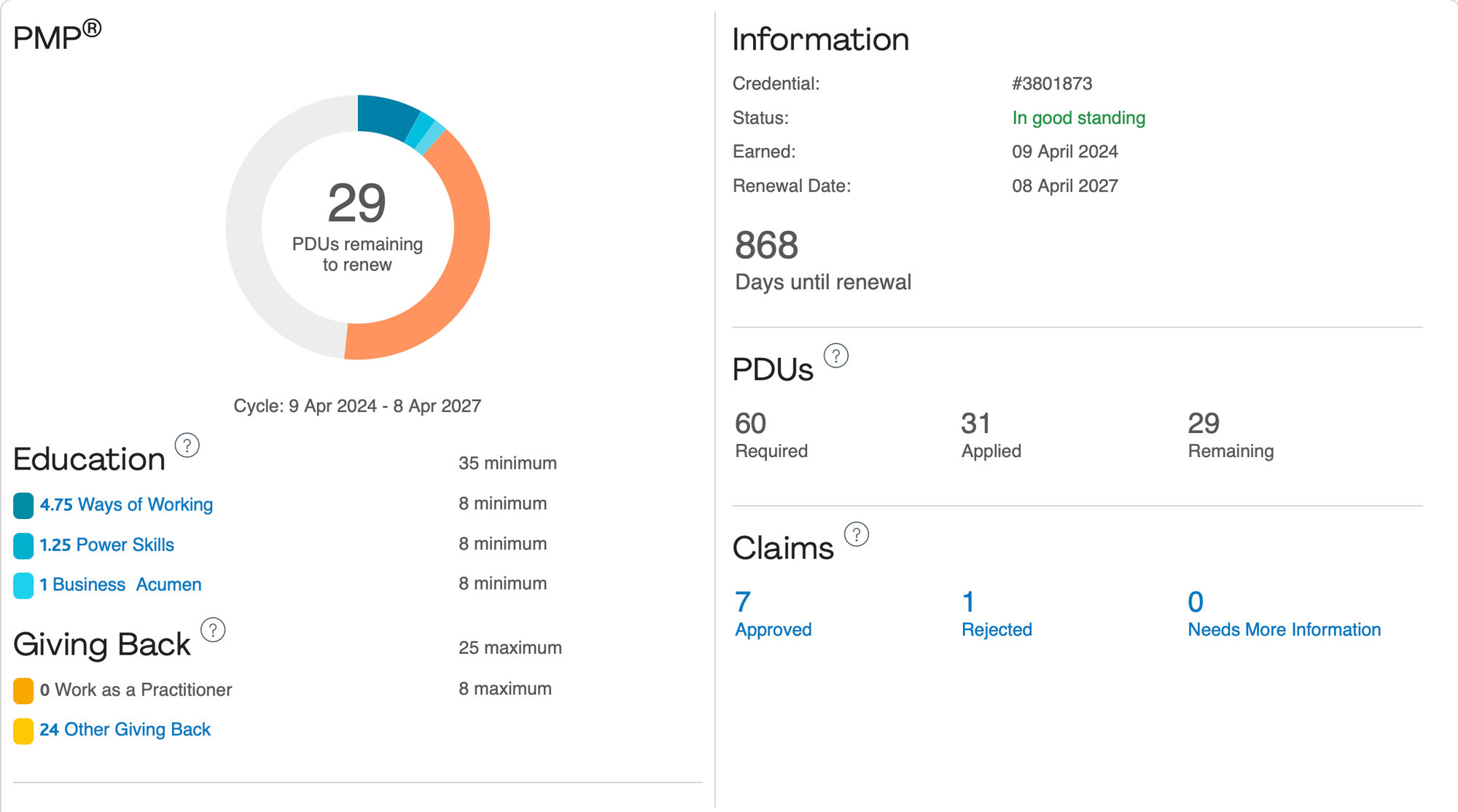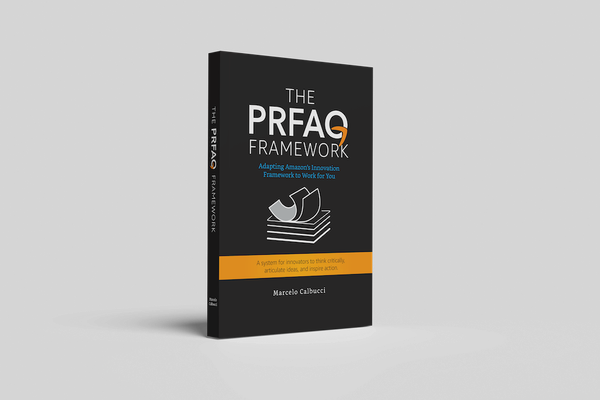So you got your PMI PMP Certificate? How to make sure you don’t lose it
Today, we will discuss strategies to ensure the maintenance of your certification. After all, you would not want to invest time, money, and effort only to have to retake your exam.

So you got your PMP Certificate? How to make sure you don’t loose it
Earlier this year, I completed my PMP Certification from the PMI Institute. It wasn’t as difficult as I expected, though I had prepared for two months beforehand. I’ll write about my exam journey in a future article. Today, we’ll discuss strategies to maintain your certification, as you wouldn’t want to waste time, money, and effort on another exam.
What is the point of a PMP Certification?
Firstly, a recap of what the PMP certification is incase you may not be familiar with it. The PMP or Project Management Professional certification is a globally recognized credential awarded by the Project Management Institute (PMI) to test your knowledge, skills, and experiences in successfully leading and managing projects (at least on paper). It does provide industry accreditation that is widely recognized through undisputedly a high standards to pass. It hopefully opens the doors for you to new job opportunities similar to your degree, at the very least.
With that out of the way, for all the months you put in to study for the exam, not to mention the mental anguish of sitting the exam itself, you will want to maintain accreditation and not let it lapse.
How long are PMP Certificates Valid for?
Once you’ve successfully completed your PMP exam and earned that certificate, it is valid for three years. During those three years it is your mission to earn PDUs as part of PMI’s Continuing Certification Requirements (CCR) program. So make sure to use your project management skillset to plan a workback date from date of expiration to now. Then set milestones through my five-point strategy below:
Earning Professional Development Units (PDUs)
PDUs are units of measurement used by PMI to quantify professional development and volunteer activities. During the three year period your goal is to earn 60 PDUs. But not all PDUs are equal. They fall into three categories, denoted by the following PDU Talent Triangle.

Power Skills
These interpersonal skills include collaborative leadership, communication, an innovative mindset, for-purpose orientation, and empathy. Ensuring teams have these skills allows them to maintain influence with a variety of stakeholders - a critical component for making change.
Business Acumen
Professionals with business acumen understand the macro and micro influences in their organization and industry and have the function- or domain-specific knowledge - to make good decisions. Professionals at all levels need to be able to cultivate effective decision-making and understand how their projects align with the big picture of broader organizational strategy and global trends.
Breakdown of PDUs
So taking the 60 PDUs you need, at least 35 PDUs must come from Education and the remaining 25 PDUs from giving back activities. I’ll elaborate even further.
Education PDUs (> 34 PDUs). Education PDUs help you build or enhance your professional knowledge. They can come from a course or training module, reading, or informal learning. I pay an annual subscription to PMI’s membership to take their webinars and courses as they provide a trough of rich material that can keep your PDU scorecard ticking. Informal learnings like meetups, lunch-and-learn events, reading the PMBOK book also allows you to accumulate points in this category.
Giving Back to the Profession (< 25 PDUs). Education is the taking part, this is the giving part, which measures your contribution to the project management community. Volunteering for PMI chapters or organizations, creating blog or other media content, and mentoring fall into this category. For me, I write blog posts like these, do a podcast, and organize a TPM Events set of meetups lets me accumulate the points I need.

Reporting PDUs
When you access content on PMI’s catalog, you automatically get accredited the points for participating. For all of the other activities you do, you will need to manually report your PDUs. You can do so by going to the CCR portion of the website.
Don’t forget, if you don’t report it, it may not count!
Tracking PDUs
You can use PMI’s online tools to track PDUs. This will help you as you develop your workback plan to spread out the potential PDU activities you want to earn. Your Dashboard in the PMI portal gives you a glimpse of how you are progressing and where your PDU points are allocated across the triangle.

Plan Ahead
Last but not least, I cannot overemphasize enoug, plan ahead to avoid last minute scrambles. You don’t want to be in the last month prior to expiration with a significant amount of PDUs you need to earn. Demonstrating your PM skills, slow and steady always wins. Divvy up the PDUs you need and plan milestones across the three-year project. While you can pay for training courses that will get you points, they can end up being quite expensive, which is why I advocate for gradual strategic accumulation using PMI’s free courses and webinars, as well as seeking out meetups and other organizations to help give up.
Hope this helps you on your journey towards maintaining your certificate.





